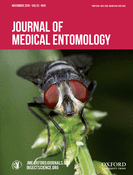-
Views
-
Cite
Cite
Daniel Martín-Vega, Martin J. R. Hall, Thomas J. Simonsen, Resolving Confusion in the Use of Concepts and Terminology in Intrapuparial Development Studies of Cyclorrhaphous Diptera, Journal of Medical Entomology, Volume 53, Issue 6, November 2016, Pages 1249–1251, https://doi.org/10.1093/jme/tjw081
Close - Share Icon Share
Extract
Developmental studies of necrophagous insects are strongly needed to support medico-legal investigations, because minimum postmortem intervals ( min PMI) can be estimated from development data for species collected from a forensic scene together with accurate temperature information from that scene. The life cycle of cyclorrhaphous flies, which include some of the most used forensic indicators, shows an unusual feature as the pupal stage and the subsequent development of the pharate adult take place inside an opaque, barrel-like puparium, formed from the cuticle of the third-instar larva ( Fraenkel and Bhaskaran 1973 ). Although unusual this feature is not unique among insects, or even among Diptera, despite the statement of Proença et al. (2014) . The period from pupariation (i.e., puparium formation) until the emergence of the adult is of special importance for forensic studies, as this period lasts for >50% of the total immature development. However, unlike the larval stage where a quantitative measure of age (e.g., body length) can be modeled in relation to time, the puparium shows virtually no external age-related changes ( Amendt et al. 2011 ). Nevertheless, the puparium can be removed in order to determine morphological markers related to age on the insect inside, which can then be used for simple age estimation. Accordingly, a number of recently published studies (e.g., Pujol-Luz and Barros-Cordeiro 2012 , Defilippo et al. 2013 , Proença et al. 2014 , Ma et al. 2015 ) have described age-related morphological landmarks in the intrapuparial development of several forensically important Diptera, chiefly blow flies (Calliphoridae). Our concern has to do with confusion regarding concepts and terminology frequently occurring in these kinds of intrapuparial development studies. It is very likely that much of the existing confusion is related to the wide use of the terms “pupa,” referring to any fly individual during its intrapuparial development (regardless of which developmental stage lies inside the puparium), and “pupal stage” or “pupal period,” referring to the period from pupariation to adult emergence in forensic entomology (e.g., Amendt et al. 2011 ). This terminology might be practical but it is incorrect, as it includes within the “pupal period or stage” not only the actual pupal stage but also the prepupal stage and the final development of the pharate adult, even when the latter is significantly the longest intrapuparial stage in cyclorrhaphous flies ( Hinton 1971 ).





